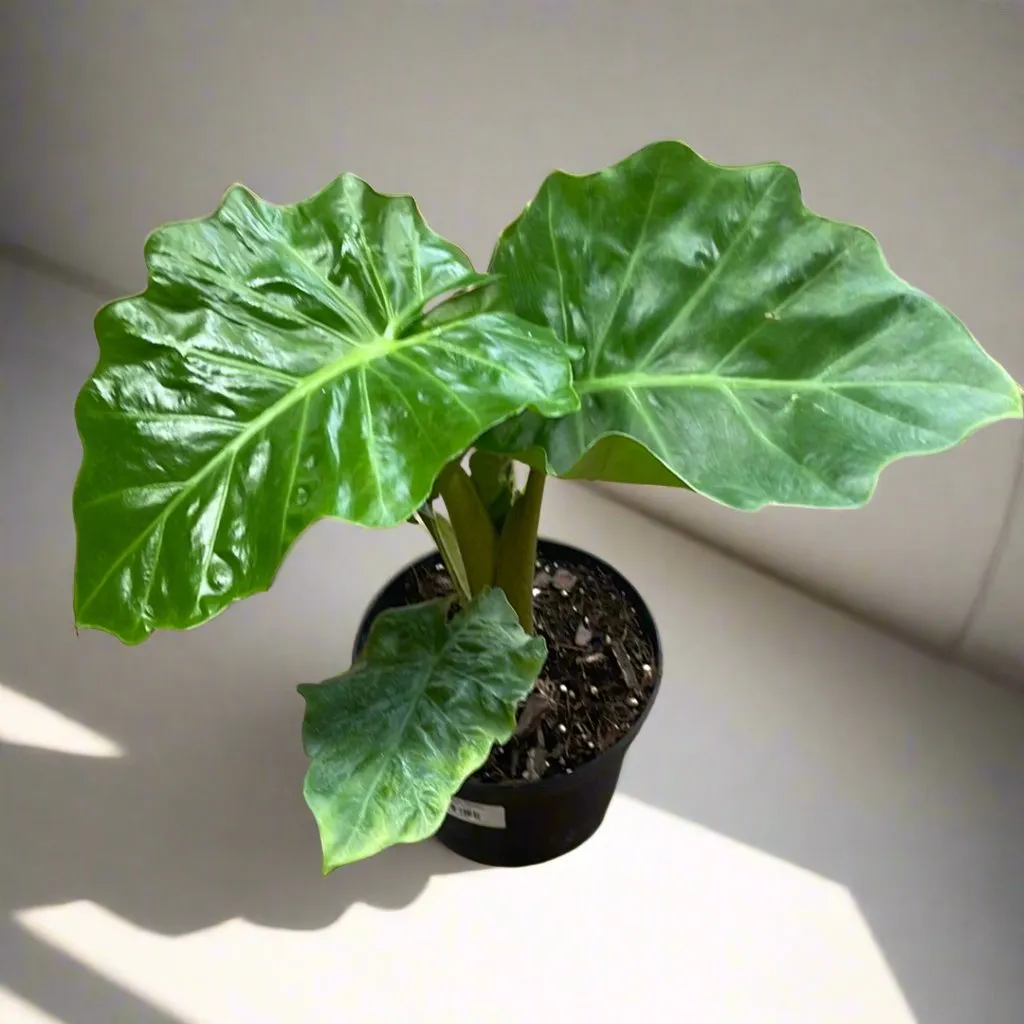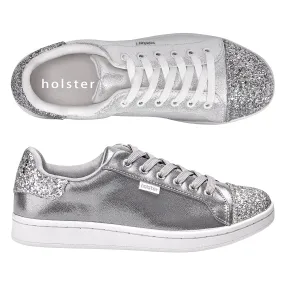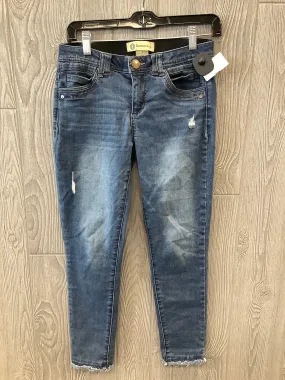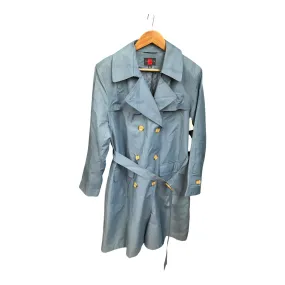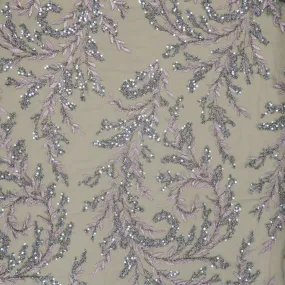Please note that we only ship plants in pots up to 6" size.
Larger plants are available to purchase for instore pickup, or local delivery options only.
ALOCASIA CARE:
(ALOE-CAY-SHA)
Alocasia are some of the most interesting, beautiful and collectable plants in the houseplant world today. Separated in to 2 general categories, all Alocasia need pretty much the same care.
Some of the most sought after varieties are grouped as 'Jewel Alocasia'. These generally smaller, uniquely patterned and colored Alocasia include varieties such sa Baginda (Dragon Scale), Cuprea, Black Velvet, Azlanii, Sinuata and many more. These highly collectable plants are slow growing, and typically much more expensive than their larger relatives. Many of them are not found for sale but every 5-10 years, and those that enjoy Jewel Alocasia are constantly wanting to add to their collection.
Other, larger Alocasia, such as Portora, Calidora, Regal Shields, Lauterbachiana, Lutea, Tyrion and more, are slightly faster growers and generally less pricey. That doesn't mean tot say that they are any less incredible or collectable. These larger varieties are frequently referred to as Elephant Ears and can reach 6-8' in height, with a thick center stalk and filling pots up to 18" in diameter. While the Jewel varieties are stunning in smaller scales, these larger varieties can make for a real show piece!
Alocasia do best in a well lit, bright area, out of direct sunlight. An hour or so of early morning, Eastern sun is ok and many Alocasia like it. While some larger varieties can be acclimated to more direct sun, it is something that you will want to do very slowly to prevent burning, stress and loss of leaves.
For watering, Alocasia prefer and do best when they are kept evenly moist at all times. Never allow them to fully dry out, as you will quickly see wilting, leaf browning and shriveling. Once an Alocasia leaf starts to droop, bend or brown, there is usually very little hope in saving it. An evenly moist soil is best, and a planter with drainage is a great option so that excess water does not pool at the the bottom of the pot, causing root issues. Check the soil every 3-4 days and water as needed. If the top inch or so of the soil is dry, your Alocasia could most likely use a drink. We find it best to check with your finger, as opposed to relying on a moisture meter. They can often times be quite inaccurate.
While it is not completely necessary, you can use a general purpose, high quality fertilizer from Spring through Fall. We recommend diluting the fertilizer to about 50% strength. Fish Head Farms soil conditioner is a great option to use year round to provide essential nutrients and promote strong, healthy growth.
A loose, well draining soil or soilless mix is ideal. A peat based mixture with lots of perlite, vermiculite or sand will do the trick. For a pre-mixed formula, we find that a Cactus/Succulent blend is perfect! Jewel Alocasia like an even airier mix, and we love to use big, chunky perlite in a coco mix or Peat based mix.
Alocasias are relatively slow growers, especially the Jewel varieties, and therefore do not need, or want, to be repotted very frequently. We recommend doing so only ever 2 years, and only if they are noticeably pot bound. Even then, you only want to move up 1 or 1.5 pot sizes to reduce stress. This should be done in the Spring or early Summer months. If you have just recently purchased your plant, do not repot it for at least 6 months.
Average household humidity levels are not generally enough for Alocasia. Regardless of whether your Alocasia are of the larger, upright varieties, or the smaller, collectable Jewel varieties, Alocasia do best in high humidity. Tanks, Terrariums and Domes provide fantastic humidity levels. Just be careful with your watering, as the soil will take much longer to dry out and could potentially cause root issues. Humidifiers near and around your Alocasia collection is generally the best way to go about raising the relative humidity and will prevent leaf browning, shriveling and dying off.
The most common pest issues for Alocasia include Mealy Bugs and Red Spider Mites, however, Thrip and even Scale Bugs can cause issues. It is always best practice to isolate any new plants you bring in to your home for a few weeks to watch for little pests. For help and tips on prevention and treatment of pests, see our here!
If you have any more questions, or need further assistance, please feel free to give us a call or shoot us an email!




